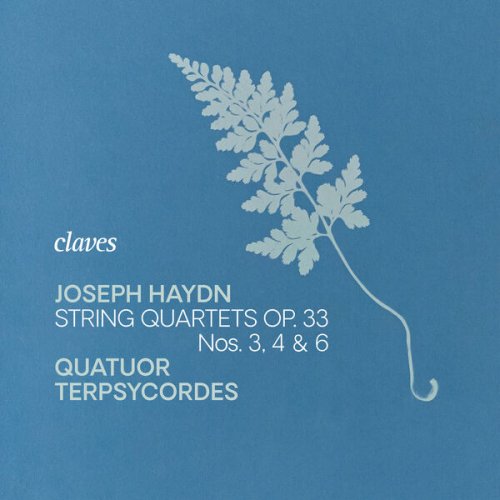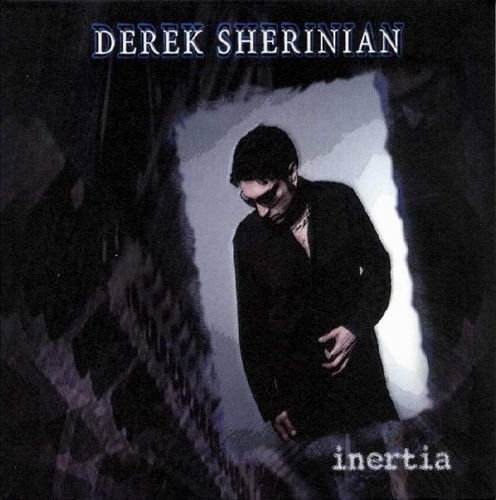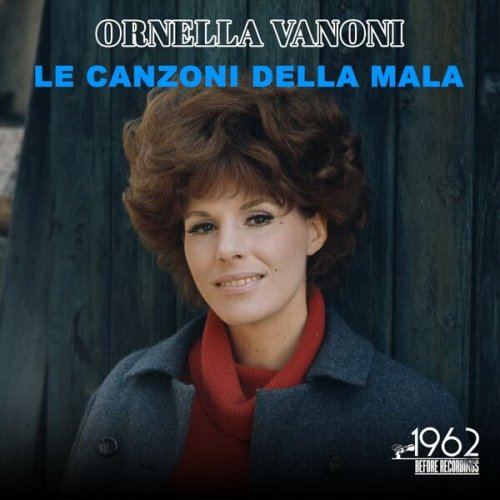Quatuor Terpsycordes - Haydn: String Quartets, Op. 33, Nos. 3,4,6 (2025) [Hi-Res]

Artist: Quatuor Terpsycordes
Title: Haydn: String Quartets, Op. 33, Nos. 3,4,6
Year Of Release: 2025
Label: Claves Records
Genre: Classical
Quality: FLAC (tracks) / 24bit-96kHz FLAC (tracks)
Total Time: 51:58
Total Size: 225 / 945 MB
WebSite: Album Preview
Tracklist:Title: Haydn: String Quartets, Op. 33, Nos. 3,4,6
Year Of Release: 2025
Label: Claves Records
Genre: Classical
Quality: FLAC (tracks) / 24bit-96kHz FLAC (tracks)
Total Time: 51:58
Total Size: 225 / 945 MB
WebSite: Album Preview
1. String Quartet in C Major, Op. 33 No. 3, Hob. III:39 "The Bird": I. Allegro moderato (6:54)
2. String Quartet in C Major, Op. 33 No. 3, Hob. III:39 "The Bird": II. Scherzo - Trio (3:22)
3. String Quartet in C Major, Op. 33 No. 3, Hob. III:39 "The Bird": III. Adagio ma non troppo (5:40)
4. String Quartet in C Major, Op. 33 No. 3, Hob. III:39 "The Bird": IV. Rondo. Presto (2:43)
5. String Quartet in B-Flat Major, Op. 33 No. 4, Hob. III:40: I. Allegro moderato (5:18)
6. String Quartet in B-Flat Major, Op. 33 No. 4, Hob. III:40: II. Scherzo - Minore (2:37)
7. String Quartet in B-Flat Major, Op. 33 No. 4, Hob. III:40: III. Largo (4:49)
8. String Quartet in B-Flat Major, Op. 33 No. 4, Hob. III:40: IV. Presto (4:51)
9. String Quartet in D Major, Op. 33 No. 6, Hob. III:42: I. Vivace assai (5:23)
10. String Quartet in D Major, Op. 33 No. 6, Hob. III:42: II. Andante (4:20)
11. String Quartet in D Major, Op. 33 No. 6, Hob. III:42: III. Scherzo. Allegro (2:10)
12. String Quartet in D Major, Op. 33 No. 6, Hob. III:42: IV. Finale. Allegretto (3:55)
Joseph Haydn often said that he had enjoyed an “exemplary destiny”: starting from nothing, he became one of the most celebrated composers of his time. He was born in Rohrau, some fifty kilometres east of Vienna, into a relatively modest family – his father was a wheelwright, a recognised and respected master craftsman. The child’s musical talent was quickly recognised; he was first sent to Hainburg and later to Vienna, where he served as a chorister at St. Stephen’s Cathedral until he turned sixteen. His firm refusal to embrace an ecclesiastical career led him to take to the streets; he then encountered the famous choirmaster Porpora, who engaged him as an accompanist for his singing lessons, lodging him in a garret where snow would sometimes seep through to his bed during the winter, but allowing him to learn Italian, singing, and composition. However, his career was launched with string quartets: in 1757, the young Haydn composed his first quartets (Opp. 1 and 2) for Baron Fürnberg. Of a new genre, distinct from the usual divertimenti, these pieces quickly achieved immense success, and copies were to be found throughout Europe. Shortly afterwards, the composer was appointed Kapellmeister, and a year later, following his unhappy marriage to Maria-Anna Keller, he entered the service of Prince Paul Anton Esterházy, one of the wealthiest families in Hungary. Deeply attached to Prince Nikolaus, Haydn held his position for thirty years, composing for the two theatres on the Esterháza estate almost all of his operas and most of his symphonic and chamber music works, before discovering London during two sojourns during which he was triumphantly celebrated. After his return to Vienna in 1795, he composed his most famous oratorios and masses alongside many other works, until his death on 31 May 1809, two weeks after Vienna’s surrender to Napoleon’s troops.





![Amira Kheir - Black Diamonds (2025) [Hi-Res] Amira Kheir - Black Diamonds (2025) [Hi-Res]](https://www.dibpic.com/uploads/posts/2025-12/1765640459_tf7wrmc9lqmqc_600.jpg)

![Kenny Wheeler, Keith Jarrett, Dave Holland & Jack DeJohnette - Gnu High (1976/2025) [Hi-Res] Kenny Wheeler, Keith Jarrett, Dave Holland & Jack DeJohnette - Gnu High (1976/2025) [Hi-Res]](https://www.dibpic.com/uploads/posts/2025-12/1765627312_cover.jpg)
![Stephen McCraven - Wooley the Newt (2025) [Hi-Res] Stephen McCraven - Wooley the Newt (2025) [Hi-Res]](https://www.dibpic.com/uploads/posts/2025-12/1765906334_cover.jpg)